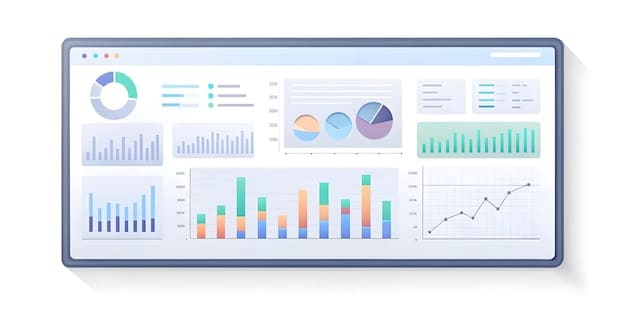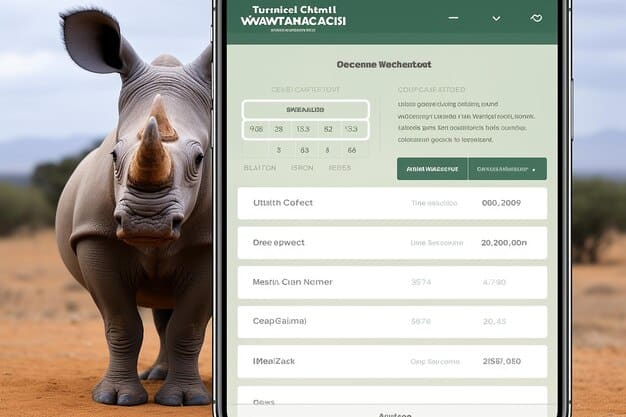Mastering Google Analytics 4: Boost Engagement in 2025

Mastering Google Analytics 4 (GA4) in 2025 involves leveraging its advanced features to track user engagement, understand customer behavior, and optimize marketing campaigns for better ROI, ensuring data-driven decisions and improved business outcomes.
Ready to elevate your marketing strategy with data-driven insights? Mastering Google Analytics 4: Track User Engagement and Optimize Your Marketing Campaigns in 2025 will equip you with the knowledge and skills to navigate the evolving landscape of digital analytics and unlock the full potential of your marketing endeavors.
Understanding the Shift to Google Analytics 4
Google Analytics 4 (GA4) represents a significant evolution from its predecessor, Universal Analytics (UA). Understanding the nuances of this shift is critical for marketers aiming to maintain a competitive edge in 2025. GA4 offers a more comprehensive view of the customer journey, focusing on event-based tracking and cross-platform analysis.
Key Differences Between GA4 and Universal Analytics
GA4 introduces a fundamentally different approach to data collection and analysis. It’s designed to provide a more holistic view of user behavior across websites and apps, leveraging machine learning to fill data gaps and predict future actions.
- Data Model: UA uses a session-based model, while GA4 is event-based, allowing for more flexible and granular data collection.
- Cross-Platform Tracking: GA4 natively supports tracking across both web and app platforms, providing a unified view of the customer journey.
- Privacy-Centric Approach: GA4 is designed with user privacy in mind, offering enhanced data anonymization and consent management features.
- Machine Learning: GA4 leverages machine learning to fill data gaps and provide predictive insights, such as churn probability and potential revenue.
Transitioning to GA4 requires a strategic approach, including a thorough understanding of its features and capabilities. By embracing GA4, marketers can unlock deeper insights into user behavior and optimize their campaigns for maximum impact.
Setting Up Google Analytics 4 for Optimal Tracking
Properly setting up GA4 is the foundation for accurate data collection and insightful analysis. This involves creating a GA4 property, configuring data streams, and implementing event tracking.

Creating a GA4 Property and Data Streams
The first step is to create a GA4 property in your Google Analytics account. This property will serve as the central hub for all your data collection and analysis activities.
- Create a GA4 Property: In your Google Analytics account, navigate to the Admin section and create a new property, selecting GA4 as the property type.
- Configure Data Streams: Set up data streams for each website and app you want to track. This involves providing the necessary information, such as the website URL or app package name.
- Install the GA4 Tag: Implement the GA4 tag on your website or app. This tag is responsible for collecting data and sending it to your GA4 property.
Once your GA4 property and data streams are set up, you can begin configuring event tracking to capture the specific user interactions you want to measure.
Tracking Key User Engagement Metrics in GA4
GA4 offers a wide range of metrics for tracking user engagement, providing valuable insights into how users interact with your website or app. Identifying and monitoring these key metrics is essential for optimizing your marketing campaigns and improving user experience.
Essential Engagement Metrics to Monitor
Focus on metrics that provide a comprehensive understanding of user behavior, such as user engagement, session duration, and conversion rates. These metrics can help you identify areas for improvement and optimize your marketing efforts.
- Users: The number of unique users who have interacted with your website or app.
- Sessions: The number of sessions initiated by users.
- Engagement Rate: The percentage of sessions that lasted longer than 10 seconds, had at least 1 conversion event, or had at least 2 pageviews or screenviews.
- Average Engagement Time: The average length of time that your app was in the foreground or your website had focus in the browser.
By tracking these key engagement metrics, you can gain a deeper understanding of user behavior and make data-driven decisions to improve your marketing performance. Analyzing trends and patterns in these metrics can reveal valuable insights into user preferences and behaviors.
Utilizing GA4’s Event-Based Tracking for Deeper Insights
GA4’s event-based tracking model allows you to capture a wide range of user interactions, providing deeper insights into how users engage with your website or app. Understanding how to implement and analyze event tracking is crucial for unlocking the full potential of GA4.

Configuring Custom Events in GA4
GA4 allows you to create custom events to track specific user interactions that are relevant to your business. This provides you with the flexibility to measure the actions that matter most to your goals.
- Define Event Parameters: Specify the parameters you want to track for each event, such as the item clicked, the form submitted, or the video played.
- Implement Event Tracking Code: Add the necessary code to your website or app to trigger the events and send the data to GA4.
- Test Your Implementation: Verify that your event tracking is working correctly by testing the events and ensuring that the data is being captured in GA4.
Properly configured event tracking can provide a wealth of information about user behavior, enabling you to optimize your website or app for better engagement and conversions. Analyzing event data can reveal patterns and trends that inform your marketing strategies.
Leveraging GA4’s Machine Learning Capabilities
GA4 leverages machine learning to fill data gaps, predict future actions, and provide automated insights. Understanding how to utilize these capabilities can give you a competitive edge in your marketing efforts.
Predictive Metrics and Automated Insights
GA4’s machine learning models can predict future user behavior, such as churn probability and potential revenue. These predictive metrics can help you proactively address issues and optimize your campaigns.
- Churn Probability: Identifies users who are likely to stop using your app or website.
- Purchase Probability: Predicts the likelihood that a user will make a purchase.
- Potential Revenue: Estimates the revenue that a user is likely to generate.
By leveraging these predictive metrics, you can tailor your marketing efforts to target specific user segments and improve your overall ROI. GA4 also provides automated insights that highlight anomalies and trends in your data, helping you quickly identify areas for improvement.
Optimizing Marketing Campaigns with GA4 Insights
The ultimate goal of mastering GA4 is to optimize your marketing campaigns and drive better results. By leveraging GA4’s insights, you can make data-driven decisions that improve user engagement, increase conversions, and maximize your ROI.
Strategies for Data-Driven Marketing Optimization
Use GA4’s data to identify areas for improvement in your marketing campaigns and optimize your strategies accordingly. This may involve adjusting your targeting, refining your messaging, or improving your landing pages.
- Segmentation: Segment your audience based on their behavior and demographics, and tailor your messaging to each segment.
- A/B Testing: Test different versions of your ads, landing pages, and other marketing materials to see what performs best.
- Personalization: Personalize the user experience based on their past behavior and preferences.
By continuously monitoring and analyzing your GA4 data, you can identify opportunities to improve your marketing performance and stay ahead of the competition. Use the insights gained from GA4 to inform your marketing decisions and drive better results.
| Key Point | Brief Description |
|---|---|
| 📊 Event-Based Model | GA4 uses events for detailed user interaction tracking, unlike UA’s session-based approach. |
| 🎯 Key Metrics | Focus on users, sessions, engagement rate, and average engagement time. |
| 🤖 Machine Learning | GA4 predicts user behavior and improves data accuracy with machine learning insights. |
| ⚙️ Custom Events | Track specific user actions relevant to your business goals for deeper analytics. |
Frequently Asked Questions
▼
GA4’s main benefit is its comprehensive, cross-platform tracking, providing a unified view of user interactions across websites and apps for a more complete understanding of the customer journey.
▼
GA4 is designed with user privacy in mind, offering enhanced data anonymization and consent management features to comply with privacy regulations.
▼
Essential metrics include users, sessions, engagement rate, and average engagement time, providing insights into user behavior and marketing campaign performance.
▼
Set up custom events by defining event parameters, implementing tracking code on your site or app, and testing the implementation to ensure accurate data collection.
▼
GA4 offers predictive metrics such as churn probability, purchase probability, and potential revenue, helping you proactively optimize your marketing strategies based on future user behavior.
Conclusion
In conclusion, mastering Google Analytics 4 in 2025 is essential for any data-driven marketer looking to gain a competitive edge. By understanding the nuances of GA4, setting up proper tracking, and leveraging its machine learning capabilities, you can unlock deeper insights into user behavior and optimize your marketing campaigns for maximum impact.





